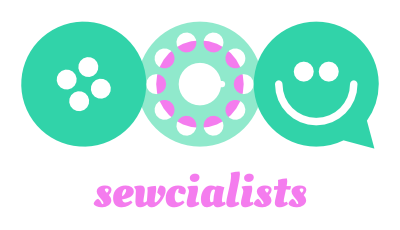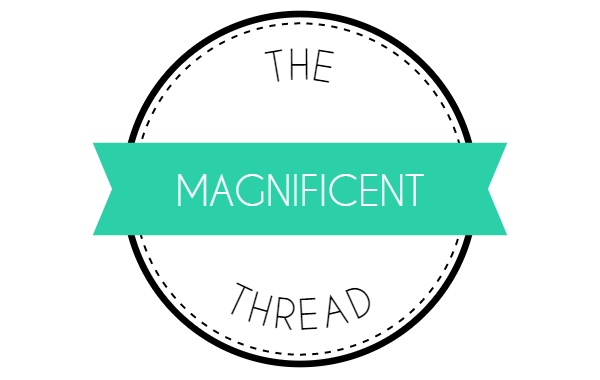I can sense a definite shift in tone in the sewing world: growing awareness of sustainability and sustainable initiatives, and with that, a heightened consideration of sustainable means and methods of creating. I started #sewingleftovers with the idea of transforming potential sewing waste into something wearable, but what if there wasn't actually any waste in the first place? The future of zero waste patterns is looking very bright - and I'd argue insanely fashionable - if Milan AV-JC are anything to go by. I had the pleasure of taking my first venture into the world of zero waste patterns with their Karma Trench. The following review is pretty epic, but in short, wow. Just WOW.
 |
| Milan AV-JC zero waste Karma Trench |
I was recently contacted by Mylène L'Orguilloux, the French designer and pattern maker behind Milan AV-JC, who is on a mission to raise awareness of the topic of textile waste. Having previously worked in the fashion industry, Mylène has now turned her attentions to developing zero waste patterns and promoting the advantages of #ZeroWasteDesign to both the fashion industry and us home sewists. Her journey, realisations and eventual rebellion against industry standard practice is a fascinating read, this perhaps being my favourite take away:
'Being able to see the "zero waste" constraint as a source of creativity is ... a sustainable and innovative answer to the environmental disaster caused by the ... the fashion industry.'
 |
I jumped at the chance to test Mylene's zero waste design philosophy in the form of her latest pattern, the Karma Trench. Whilst I pride myself on being able to see beyond the cover of a Big 4 envelope, I'm still a total sucker for great styling and fabric choices, so if you're not sold on the concept alone, let the beautiful Milan AV-JC sample garments and photography reel you in. There are currently 4 PDFs to choose from, available in both French and English.
 |
| Innovative ways of using every last scrap of fabric |
I opted to print the A4 PDF, though the pattern comes with an A0 file if you'd rather get it copy-printed. The tiled pages essentially form a jigsaw of all the pattern pieces you need to make the trench and cover the width of the fabric, with just a little to spare down the side. Fears of blunting my fabric scissors from cutting through the paper quickly subsided, as the process was so fast! I was impressed with the creative use of every last bit of fabric within the pattern, from belt loops nestled into the armholes, to the little detail of a label holder buried in the back neckline.
 |
 |
 |
| Showing off the epic sleeve proportions |
The skill level for making the trench is listed as 'easy' and it really is. The instructions are all contained within a high quality 15 and a half minute YouTube tutorial, which you can watch before buying the pattern if you want to assess the skills involved. I've never worked solely from a video tutorial before but I really enjoyed the experience of actually seeing how elements of the pattern come together before doing it myself.
The pockets are made up of 4 rectangles of fabric and the tutorial encourages creativity in how you fold them to create the final design. I couldn't help but feel that mine were a little clunky when I made them, but they started to look better on the whole once the garment came together. I also thought they sat a bit low initially, but when the trench is belted up, they're just right.
 |
| The most unusual patch pockets |
 |
 |
 |
The rest of the garment comes together very quickly, particularly as there are no seams or edges to finish. I came to realise that my fabric was going to fray way more than practical or 'trendy' and I wasn't so keen on the wrong side, which was exposed by the large lapels (the fabric used in the sample garments seems to be double-sided). Ironically, I actually had a good amount of leftover fabric as I had to purchase it in full metre units, rather than being able to buy the specified minimum length of 204cm required for the size 38.
I used this spare fabric to draft a simple facing for the back neckline and front opening of the trench, with quite a generous allowance for the lapels. I also created facings for the sleeves as I couldn't risk spoiling the amazing shape of them with a dodgy hem - they extend to the seam mid-way up the sleeve, where they're tacked in place. The curved hem probably suffered the most in my experiments in using non-suitable fabric. I overlocked it and turned it up to a narrow hem, which has left it looking a little flute-y, but I'd say that the overall damage-control has been a pretty good save.
 |
| Flashing my facings |
 |
| The label holder taking pride of place on my added facing |
 |
| Back view |
Whilst it might defeat the point of a zero waste pattern to buy extra fabric, if you can't find a non-fraying fabric then making these adjustments would definitely be an option - it's improved the overall finish of my Karma Trench no end. In other fabric options, I'd be interested to see how this works in a medium weight boiled wool, similar to the Maker's Atelier Raw-edged Coat.
 |
 |
 |
| Zero waste win! |
These projects being zero waste are to some extent dependent on being able to buy fabric in very specific lengths, as I found with my Trench. The only online fabric shop I'm currently aware of that lets you do this is Stoff & Stil, but if you have any other recommendations for my future zero waste adventures, please leave them in the comments below!
You can read more about the Milan AV-JC project here
Stay in touch!
- Tuesday, October 09, 2018
- 27 Comments






